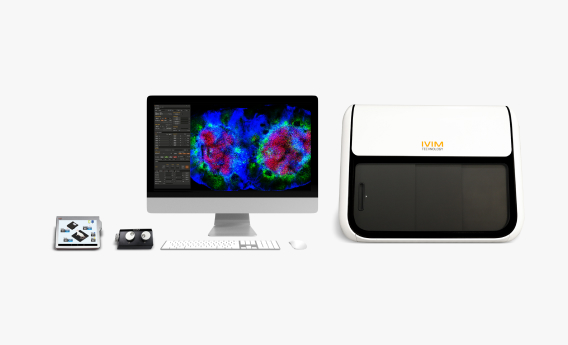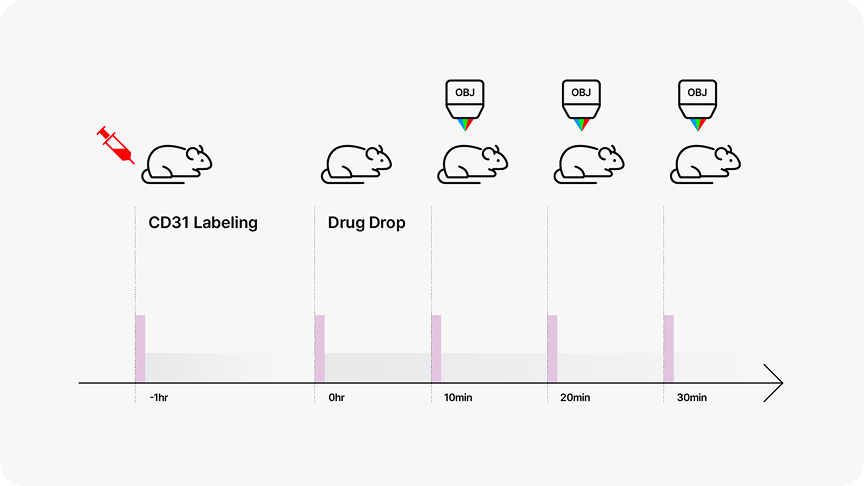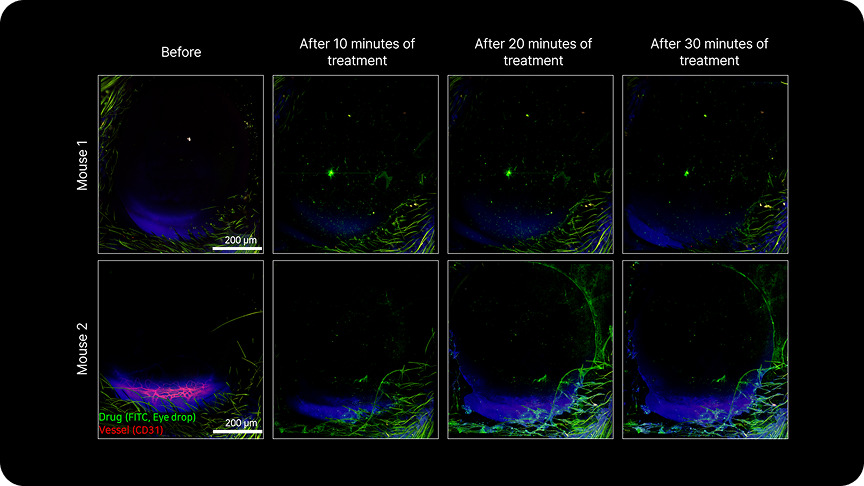Liver
In vivo intravital imaging of the liver offers a powerful approach to studying dynamic cellular and molecular processes within this vital organ. By leveraging intravital imaging technologies, researchers can gain valuable insights into the complex mechanisms underlying liver physiology and pathology, paving the way for the development of novel diagnostic and therapeutic approaches for liver diseases.
Here are some key applications:
1. Hepatic Microcirculation
Intravital imaging enables real-time visualization of blood flow dynamics, vascular permeability, and microvascular architecture within the hepatic microcirculation. Researchers can study the regulation of hepatic blood flow, sinusoidal perfusion, and vascular responses to physiological and pathological stimuli.
2. Hepatocyte Function
Imaging techniques allow for the direct observation of hepatocyte structure and function, including hepatocellular transport, bile secretion, and metabolic activities. This provides insights into the mechanisms of liver diseases such as fatty liver disease, hepatitis, and cirrhosis.
3. Kupffer Cell Dynamics
Intravital imaging facilitates the study of Kupffer cell behavior, phagocytic activity, and interactions with circulating immune cells within the liver sinusoids. Researchers can investigate the role of Kupffer cells in liver inflammation, immune responses, and clearance of pathogens or toxins.
4. Hepatic Fibrosis and Inflammation
Our imaging techniques allow for the visualization of hepatic fibrosis, inflammatory cell infiltration, and tissue remodeling within the liver parenchyma. This provides insights into the pathogenesis of liver diseases such as fibrosis, hepatitis, and autoimmune liver disorders.
5. Drug Metabolism and Hepatotoxicity
Intravital imaging can be used to evaluate drug metabolism, distribution, and hepatotoxic effects within the liver in real-time. Researchers can assess drug-induced liver injury, metabolic activation of prodrugs, and drug-drug interactions, guiding the development of safer and more effective therapeutics.
6. Liver Regeneration
Our imaging techniques enable the tracking of hepatocyte proliferation, liver regeneration, and tissue repair processes following injury or partial hepatectomy. Researchers can study the cellular and molecular mechanisms underlying liver regeneration and develop strategies to enhance hepatic recovery and function.
7. Tumor Microenvironment (TME)
Intravital imaging of liver tumors allows for the visualization of tumor-stroma interactions, angiogenesis, and immune cell infiltration within the tumor microenvironment. Researchers can study the dynamics of tumor growth, metastasis, and response to anti-cancer therapies, informing the development of novel treatment strategies for liver cancer.




